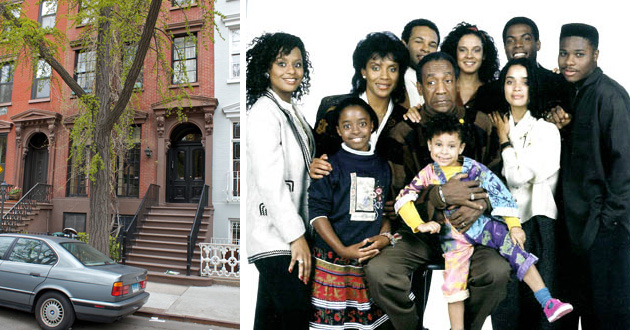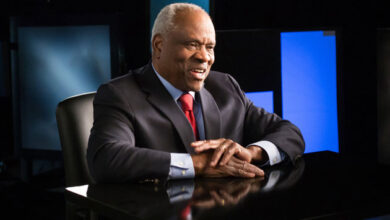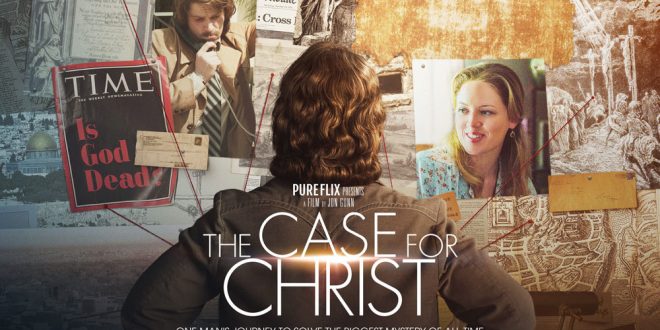The Cosby Show’s life lessons live on; revolutionary sitcom turns 30

Break out your boldest and brightest sweater—America is celebrating The Cosby Show.
Sept. 20 marked the 30th anniversary of the hit sitcom starring Bill Cosby, the middle-aged man clad in those iconic sweaters who became the image of America’s dad and one of the foremost figures in 1980s pop culture. At its peak, The Cosby Show spent four years as the most-watched program in America, winning six Emmys and two Golden Globes. Critics say the show recast the popular perception of black family life and revived both the sitcom genre and NBC’s fortunes.
When it premiered in the autumn of 1984, The Cosby Show broke more than one television mold. The residents of 10 Stigwood Ave., Brooklyn Heights, were an African-American family whose race and upper-middle-class socio-economic position were simply narrative facts, not key players in the comedy or drama. Cliff Huxtable was a gynecologist, his wife Claire an enterprising lawyer, and their eldest child (of five), Sondra, studied at Princeton. The show was about normal people living normal lives, experiencing ordinary joys and frustrations.
“I was a beautiful woman once, before the children came,” bemoans Claire to her husband in one scene. “Do you think when they grow up I’ll be beautiful again?”
Cliff, speaking for exasperated parents everywhere, delivers the punch line: “I just hope they get out of the house before we die.”
Mark Whitaker, author of the new biography, Cosby: His Life and Times, told me this focus on ordinary family situations made The Cosby Show quietly “revolutionary” for the television world, at a time when situation comedies were considered a dead art form.
Unlike previous black comedies, The Cosby Show steered clear of overt racial humor while still featuring more black culture than had ever been seen on prime time, Whitaker said. It also was radical in its naturalism: Refusing to use standard sitcom jokes, Cosby even hired Harvard psychologist Alvin Poussaint to vet the scripts for psychological accuracy.
So what made The Cosby Show so downright hilarious? Cosby always focused on first telling a good story, then looking for ways to “find the funny,” as he put it. At the same time, Whitaker said, many of the show’s most memorable episodes started with seemingly off-the-wall suggestions from Cosby that the writers had to figure out how to turn into stories: “For example, one day Cosby told the writers that he thought they should do an episode where the Huxtables lip-synch. From that one idea came the famous episode where the family performs the Ray Charles hit, ‘Night Time (Is the Right Time)’ for Cliff’s parents on their wedding anniversary.”
But there was always a takeaway message behind the laughs. Cosby was determined to avoid doing the kind of overtly racial material expected of black comedians and dedicated to conveying his controversial philosophy that the black community must take responsibility for its fate. When critics berated him for failing to engage with the harsh reality of racism in America, he always defended the depth of the show’s messages about culture and family, which had nothing to do with the skin color of its characters.
“What made me want to do the series was that as a parent watching situation comedies with my family, I wanted to take the house back as a parent,” he told USA Today in 2005.
For the eight seasons it aired, the sitcom consistently reflected Cosby’s vision of a primarily color-blind comedic set-up as expressed through the loving, rarified Huxtable family. What really mattered in the end is that swaths of Americans were enthusiastically engaging with a black family on TV—a fact that was hugely significant for popular culture all by itself.
And that, according to John Schmidt, associate professor of cinema and media arts at Biola University, is what Bill Cosby’s TV legacy is all about.
“Probably its primary contribution was to show a vast white audience that the Huxtables were very much like most other families living out what it means to have a family, raise kids, laugh and love together, and generally go through the ups and downs inherent in every home,” Schmidt said. “This simple contribution was profound, and hopefully taught us all to embrace our similarities, while at the same time celebrate our cultural and racial differences.”
— by Caroline Leal




